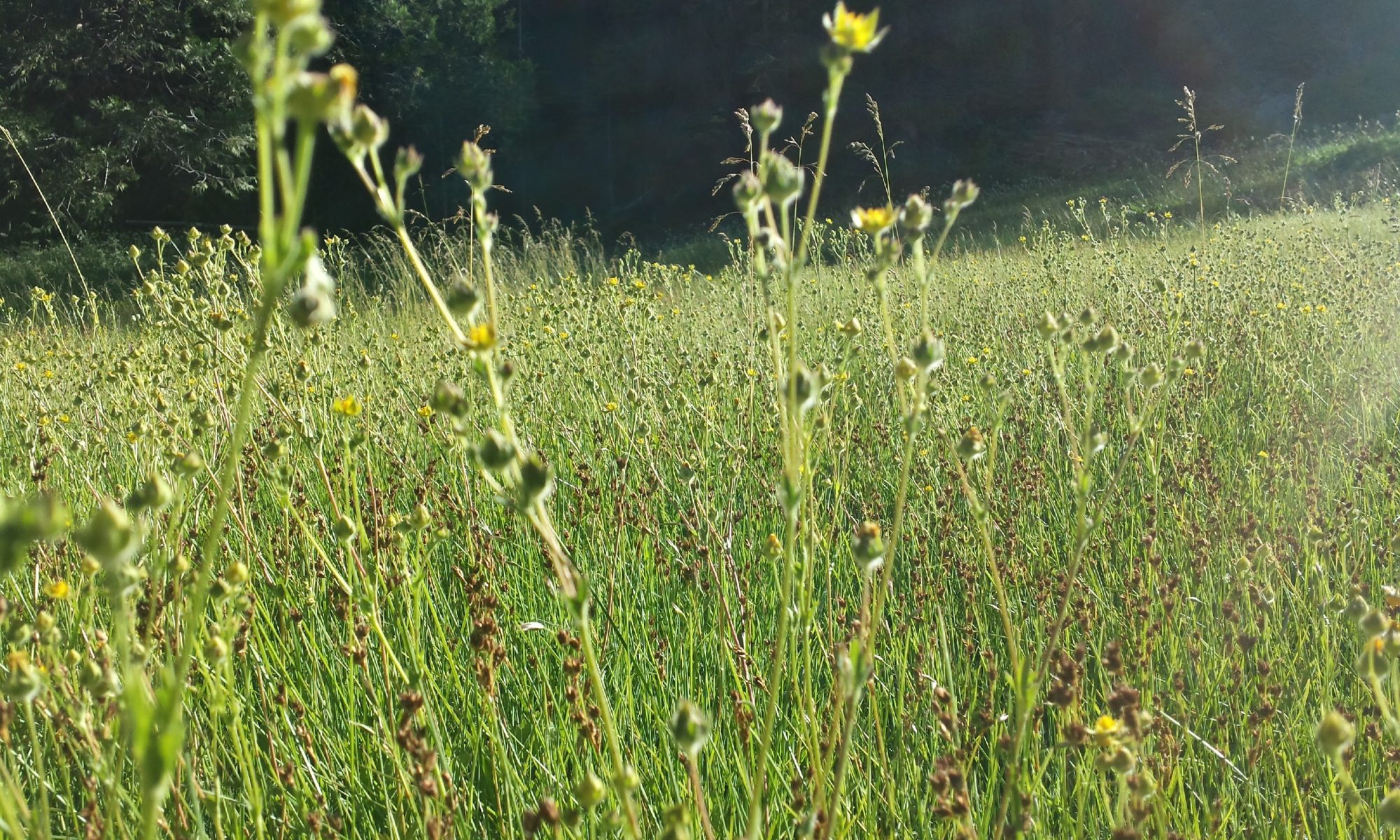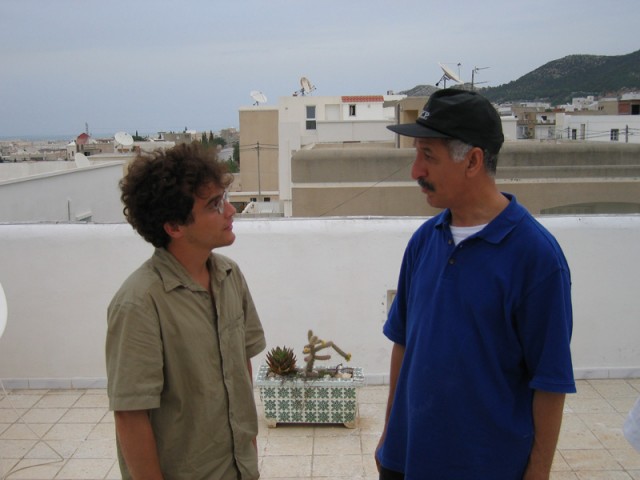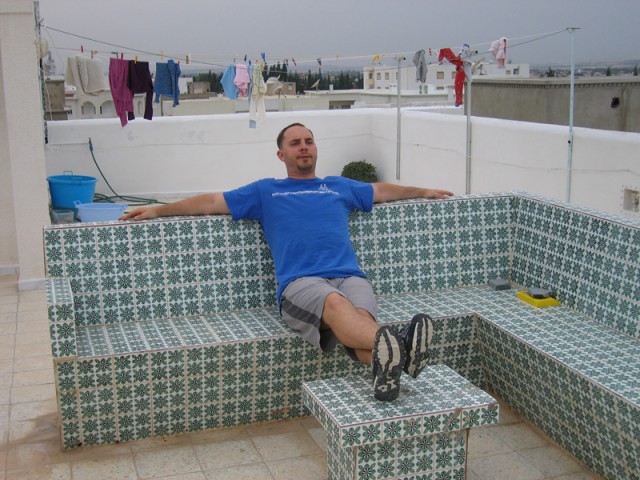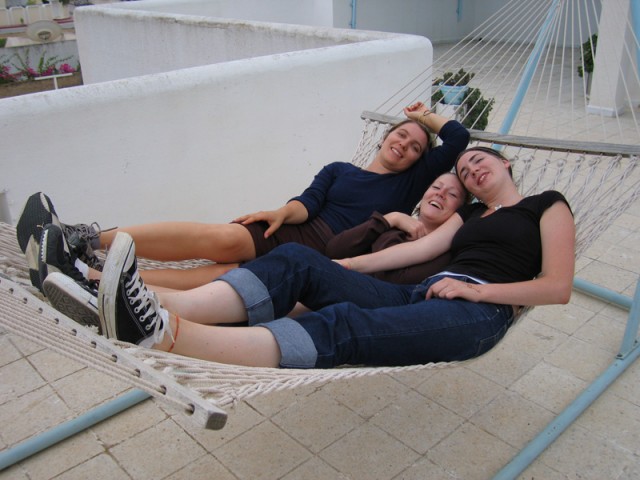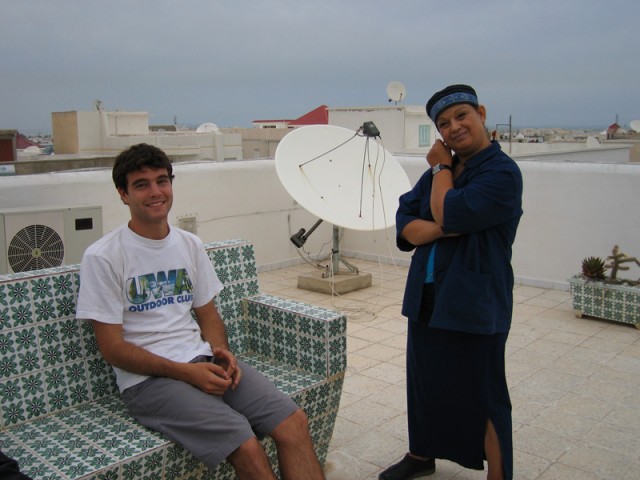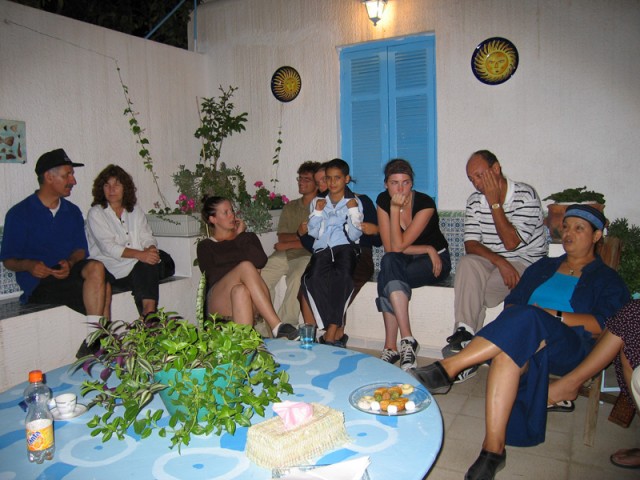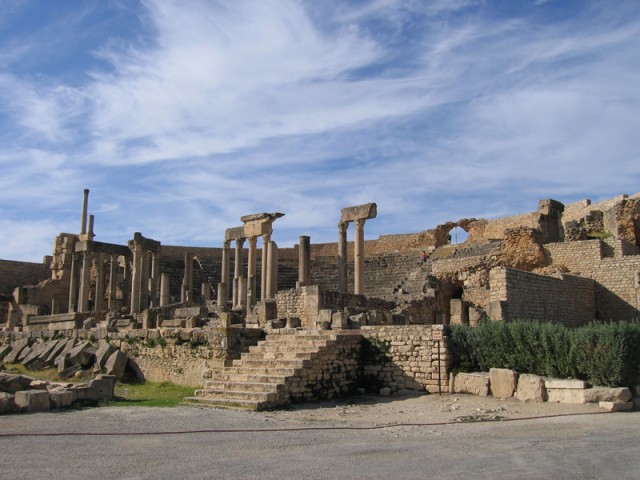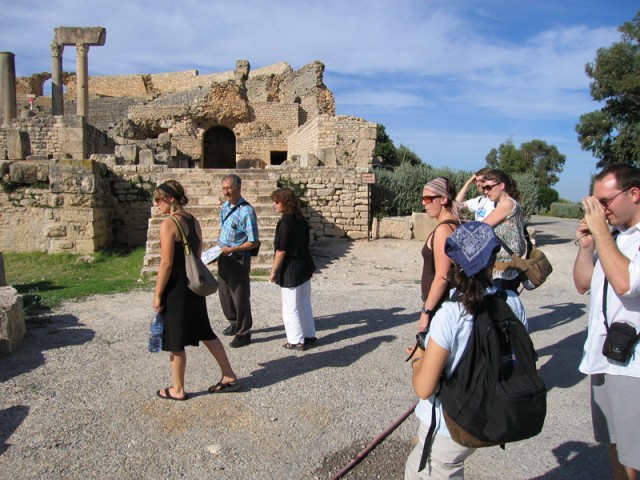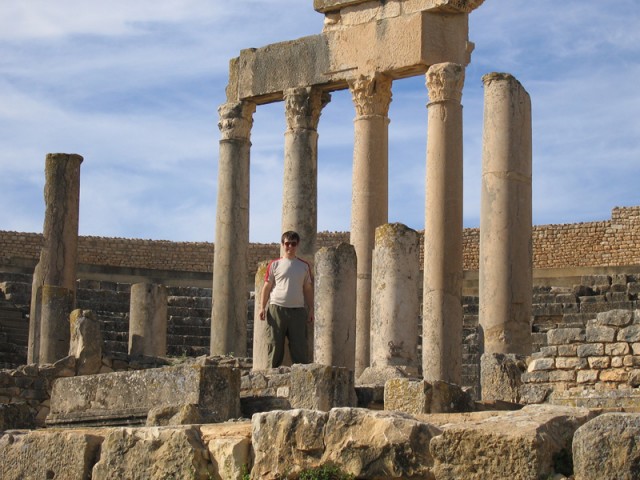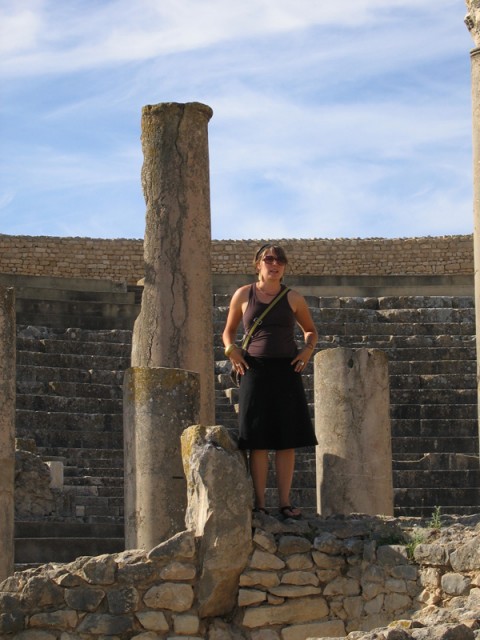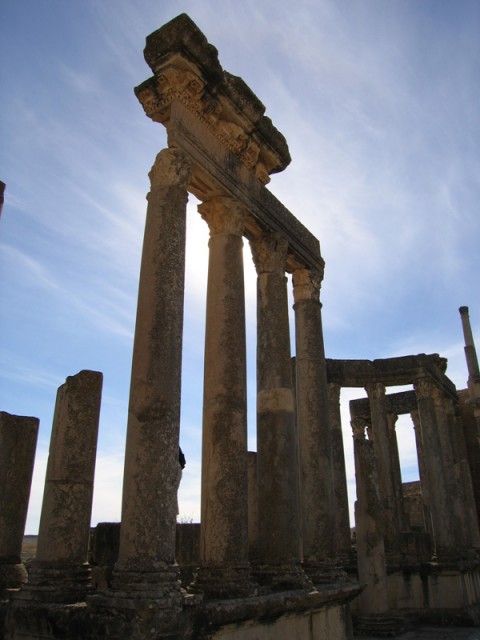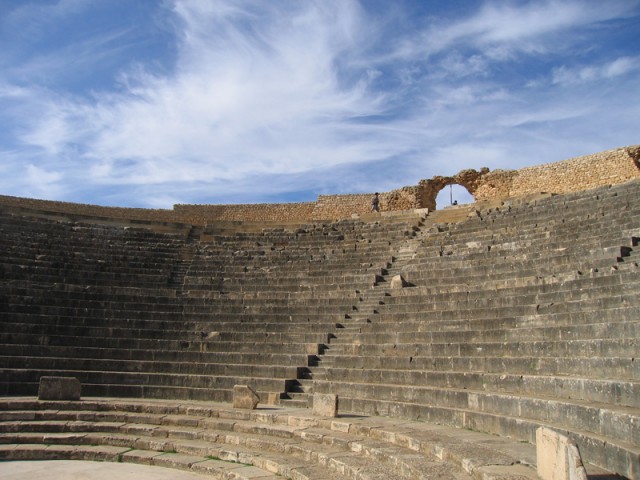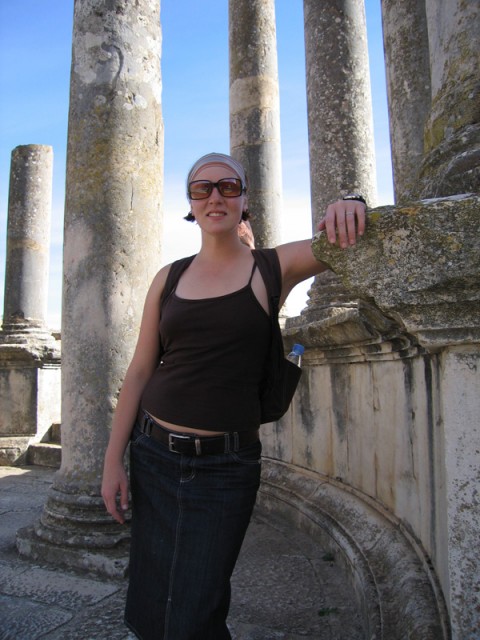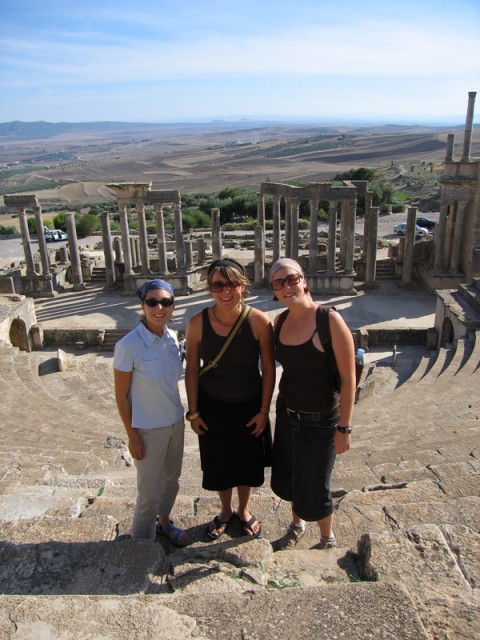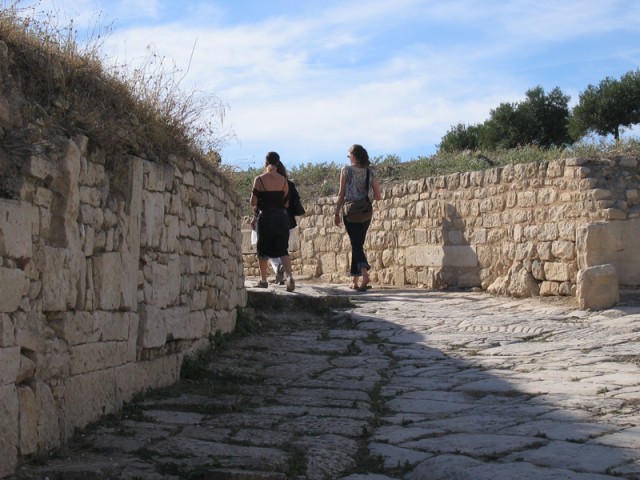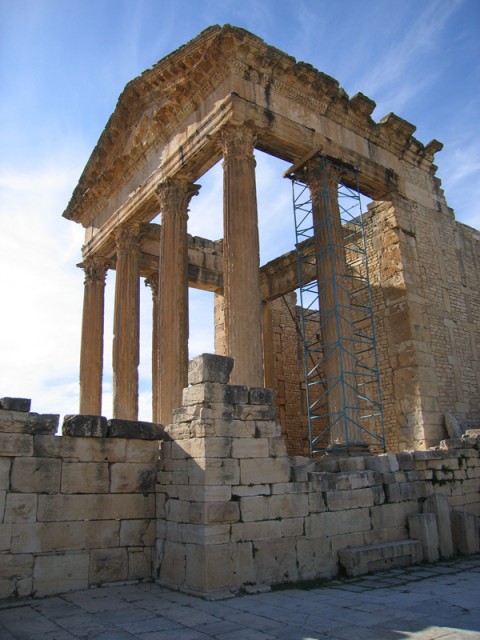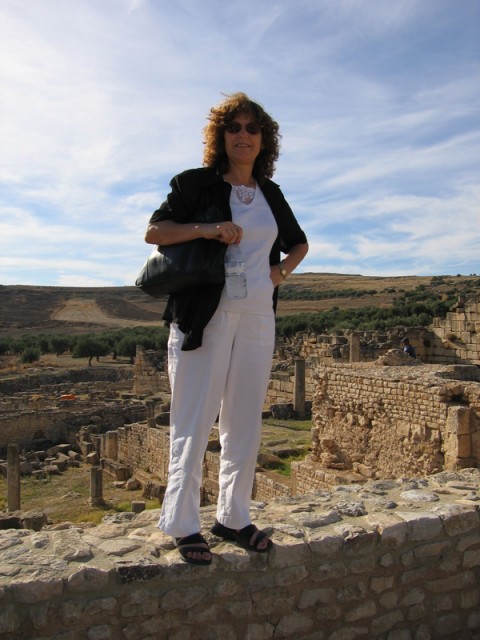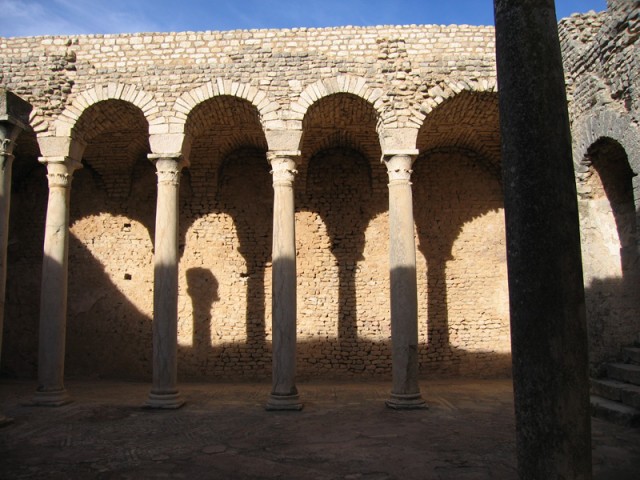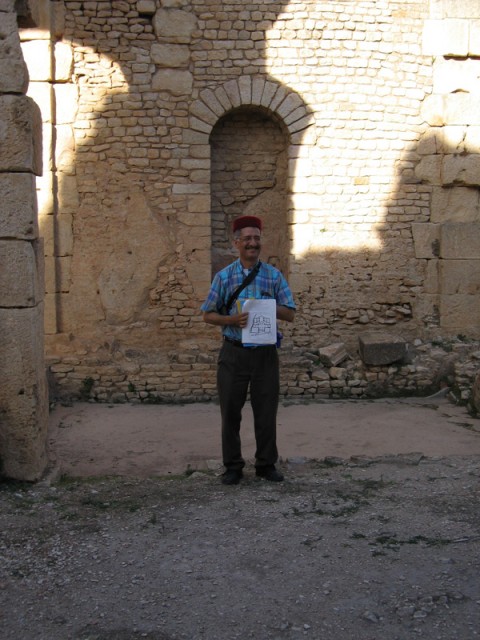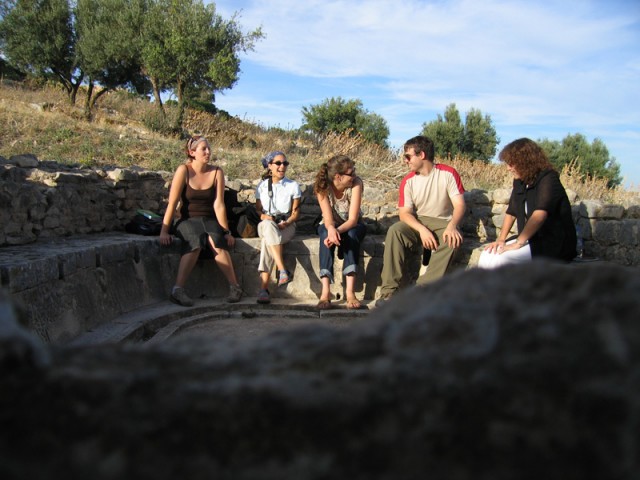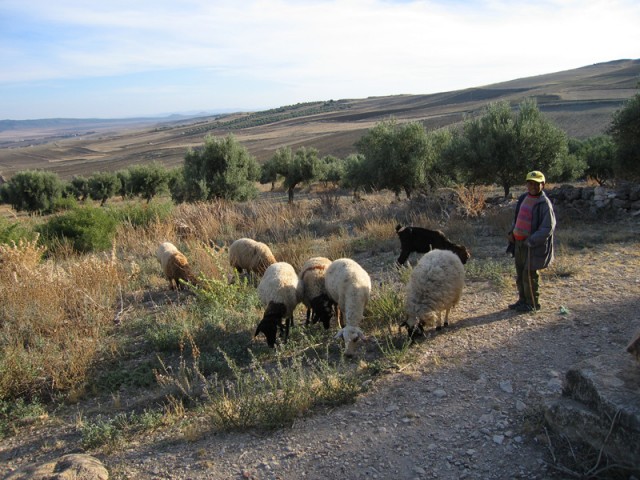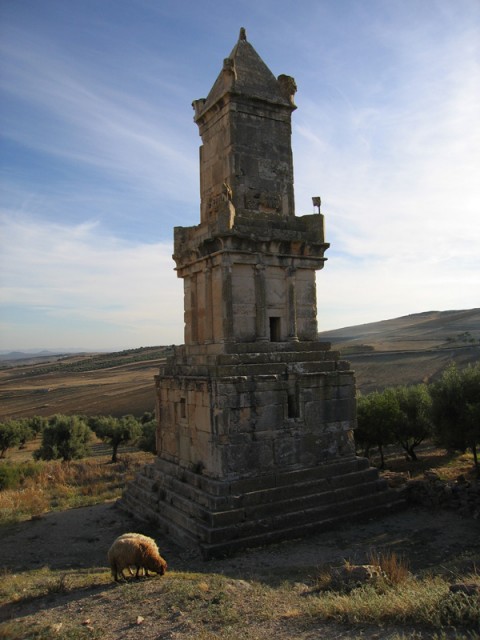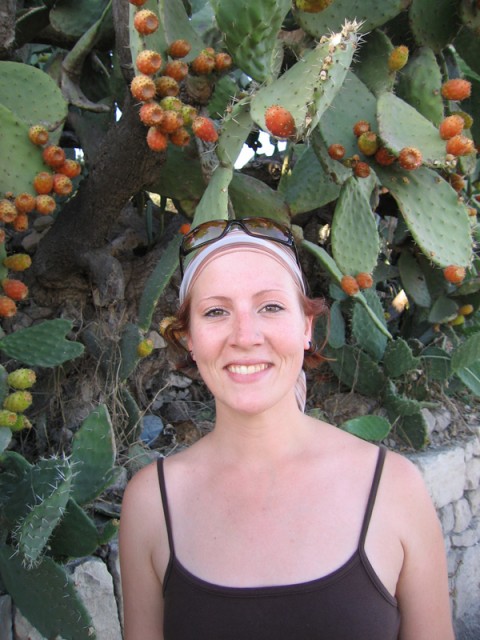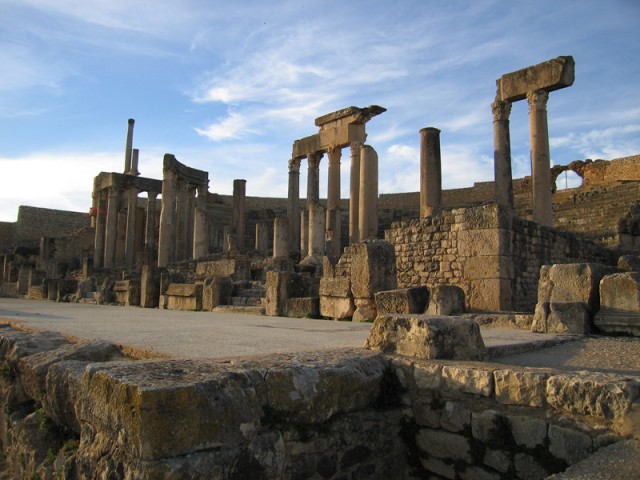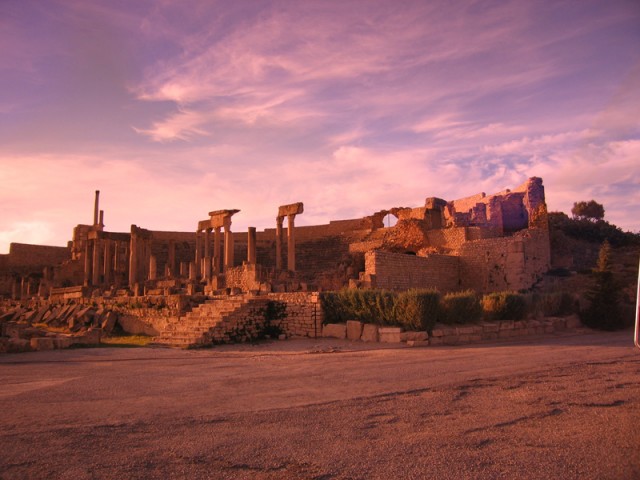Gabes and the Chenini oasis are the old stomping grounds of my professor, Karim. He grew up in the oasis. Most of his family still lives in the area and he and his brother have a business based out of Gabes. We stayed the night in Gabes, visited his family’s patch of oasis, saw the cave house that Karim was born in, had a great lunchtime feast courtesy of Karim and his brother’s business, had Jeff shot, and got a nice cake courtesy of the hotel and the secret police who just wanted the night off. Mike ended up making them take him downtown to a store that sold beer and wine to bring back beverages for part of the group. The secret police (who by this point were anything but a secret to us) were happy to oblige a simple beer-run request rather than having us do a pub crawl of Gabes. In very much non-tourist zones such as Gabes, such things are frowned upon.
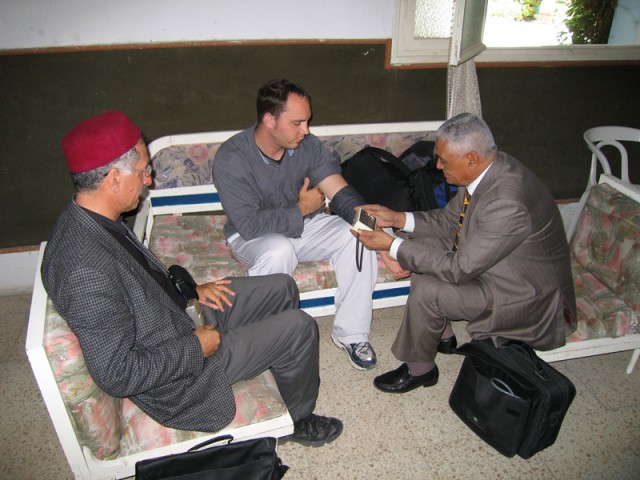
Jeff getting ready to take it like a man. He was still doing pretty poorly from whatever illness he picked up. The doctor gave him a big penicillin shot in the posterior region. Jeff said it reminded him of his navy days.
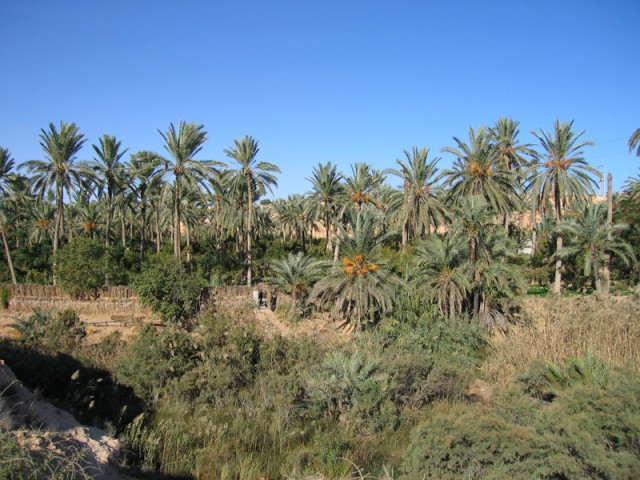
Karim’s family’s plot of oasis.
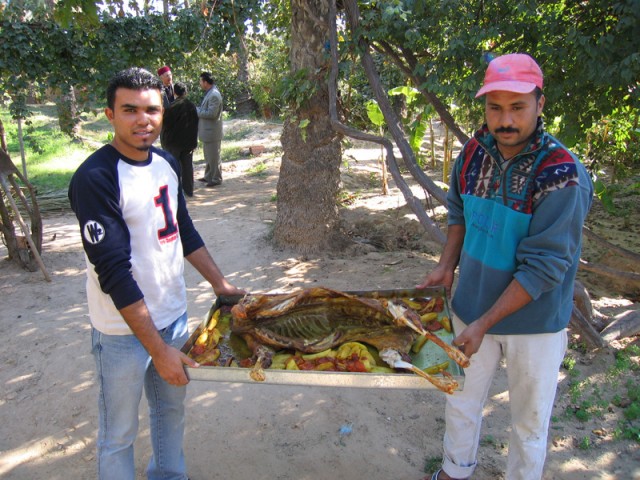
The whole lamb that was roasted in our honor. There were many local and regional dignitaries in attendance including our secret police escort. The food was quite fine, although a bit grotesque for some.
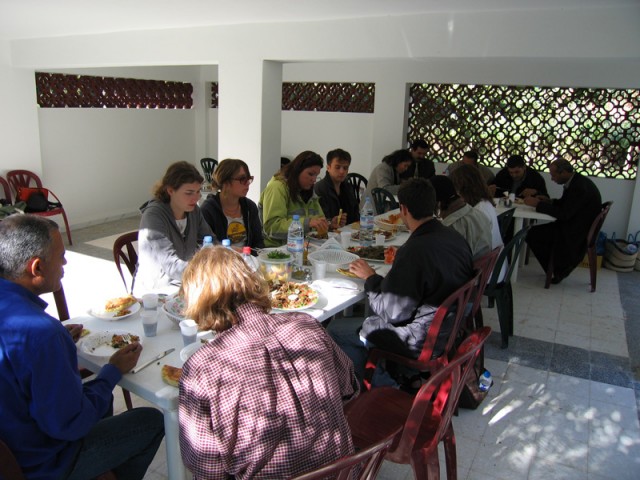
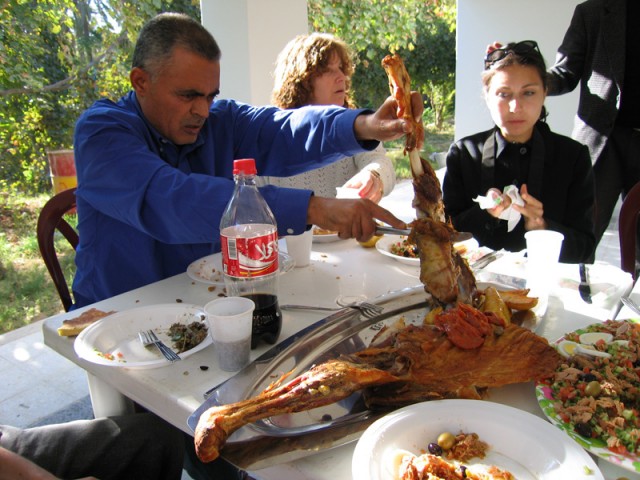
Our bus driver, Mongi, takes a leg of lamb. Giovanna doesn’t look particularly pleased with this turn of events.
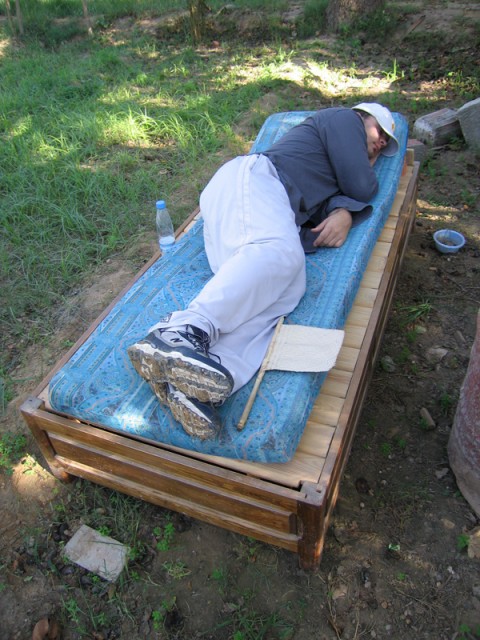
Jeff was still feeling pretty lousy. If only we had some palm fronds and grapes, he could have been miserable in style!
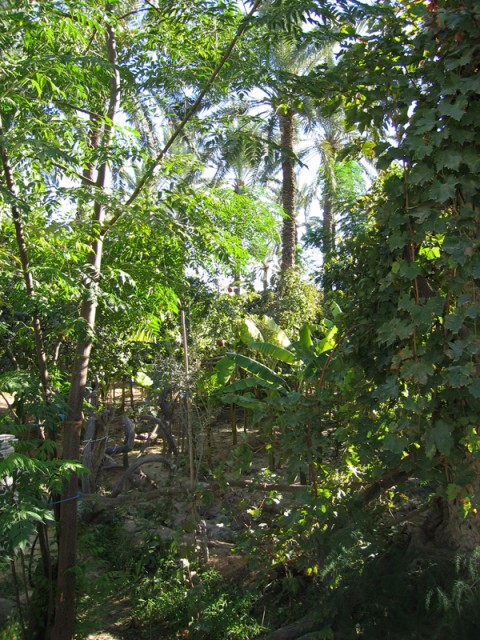
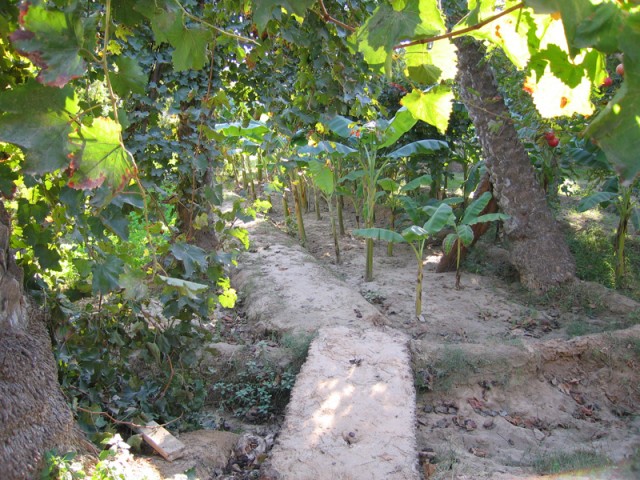
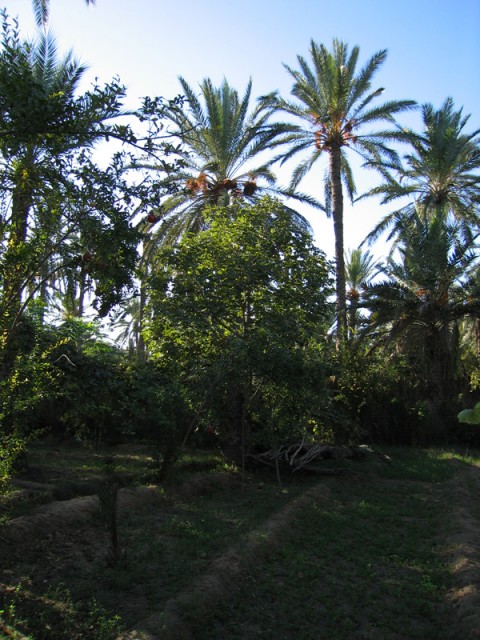
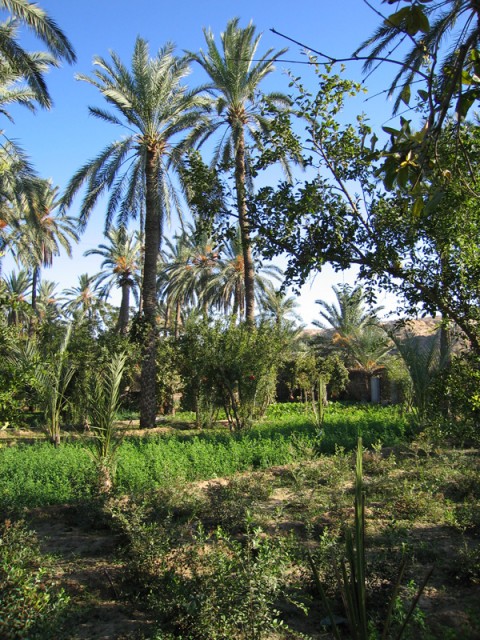
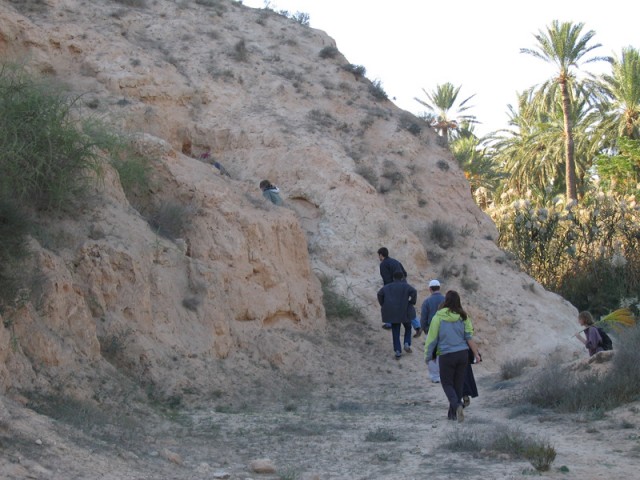
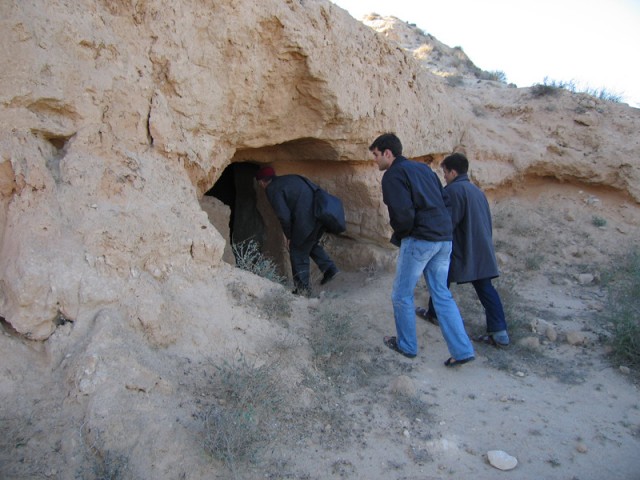
The cave dwelling where it all began for Karim. Karim lived with his family in this cave for the first few years of his life before they moved into an above-ground house in Chenini Nouvelle. Aside from all of the dust and creepy-crawlies, I think I would prefer to live in a cave in this climate! Warm in the winter and cool in the summer. You can’t go wrong!
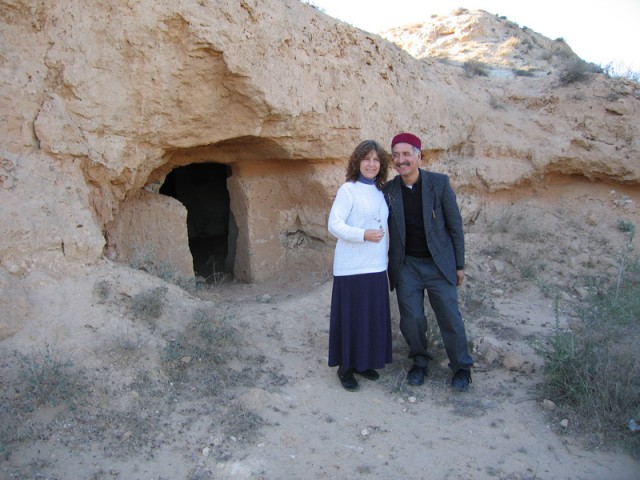
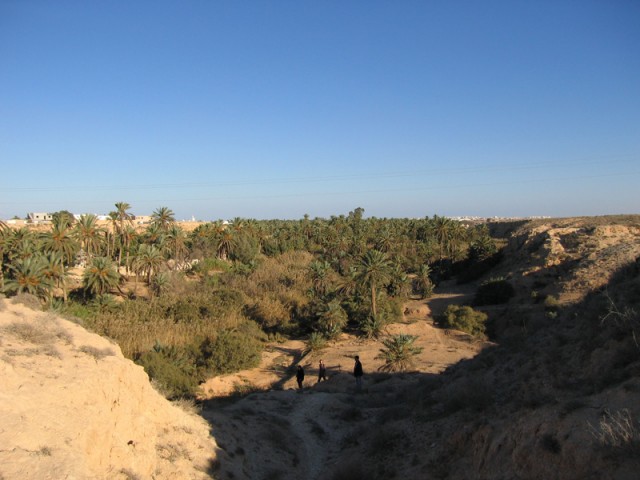
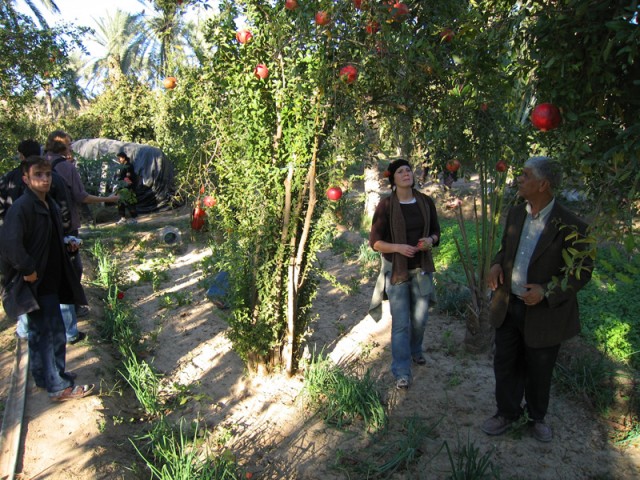
Pomegranates are very tasty. They’re a favorite of mine after having been in Tunisia. Nothing quenches your thirst or hunger quite like a pomegranate.
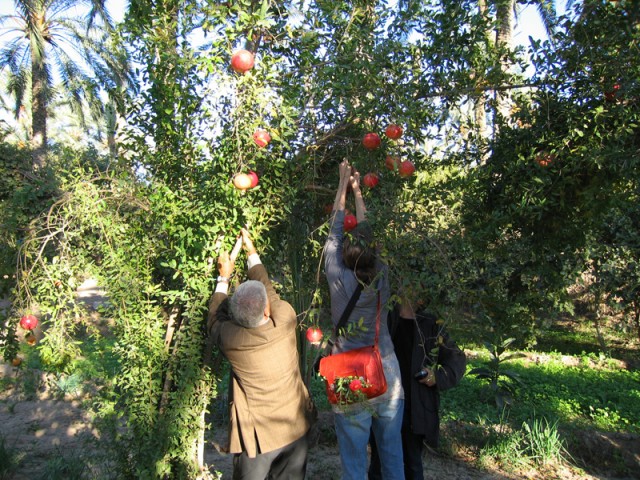
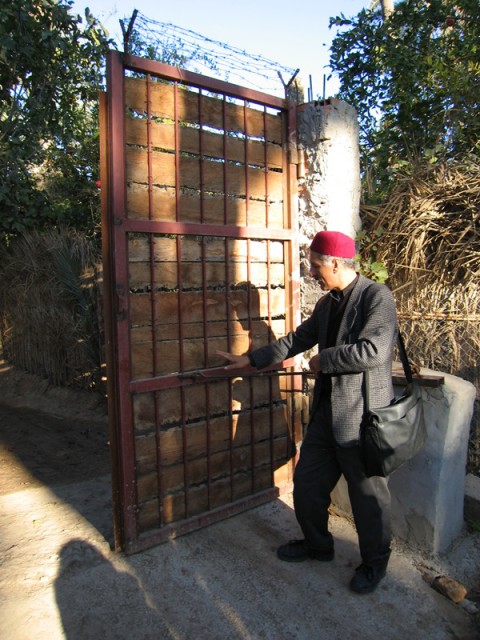
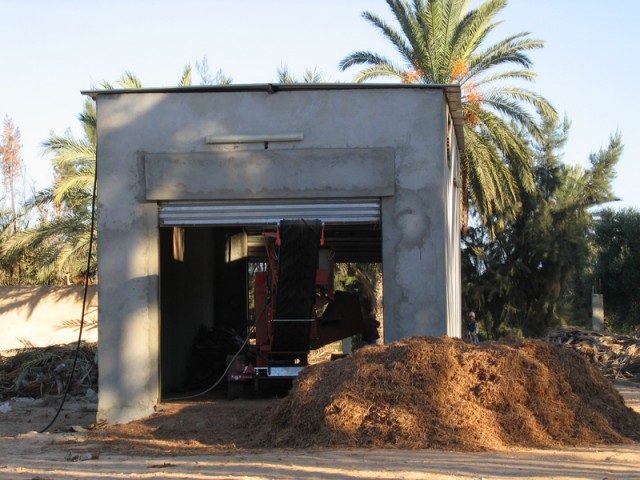
We visited an NGO in the oasis. This NGO makes compost and fertilizer for farmers out of farm waste. While we were at the facility, my mother called from America to discuss our eventually aborted plans to go on vacation to Libya. Maybe some other time!

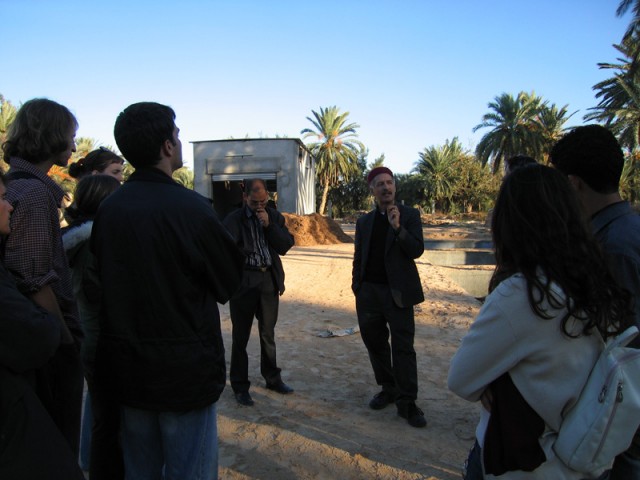
This is another NGO facility. Here, they are preserving heritage plants from the oasis so there is a core stock available to the oasis farmers. GMO food is the reason this place exists. They don’t want GMO crops in the oasis. We visited right at sunset.
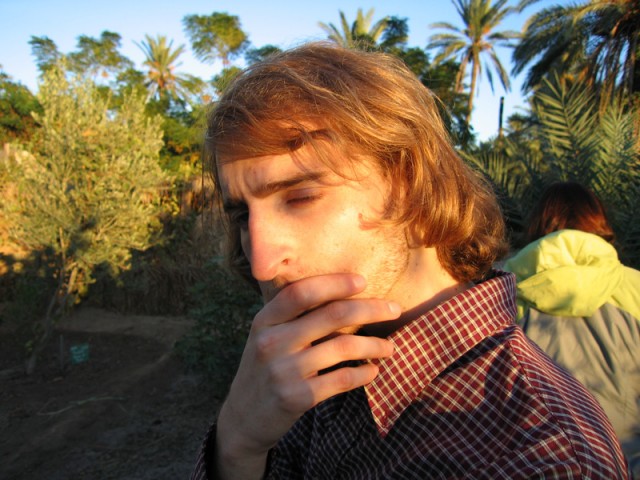
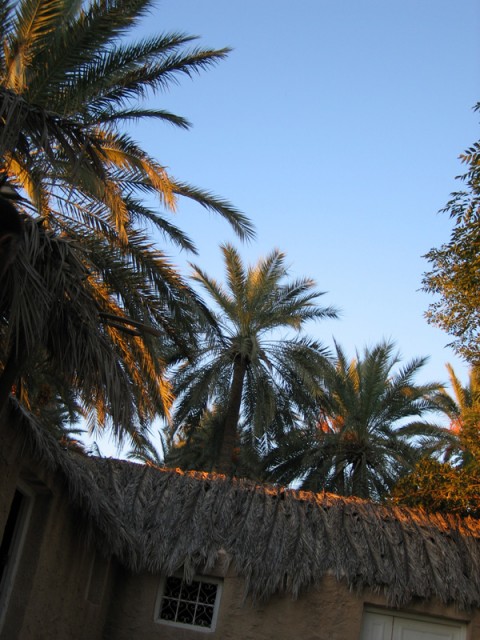
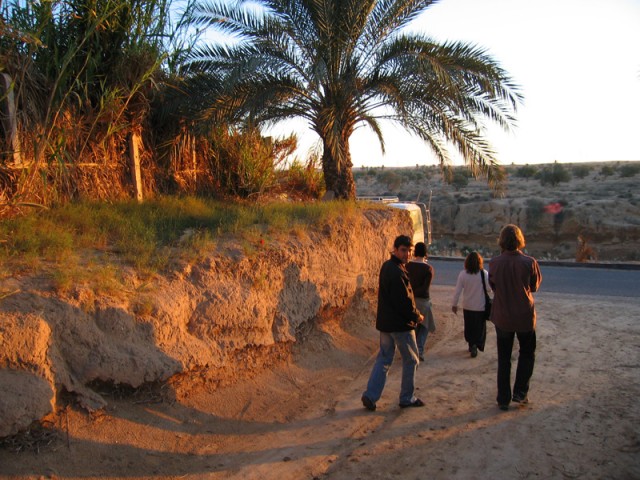
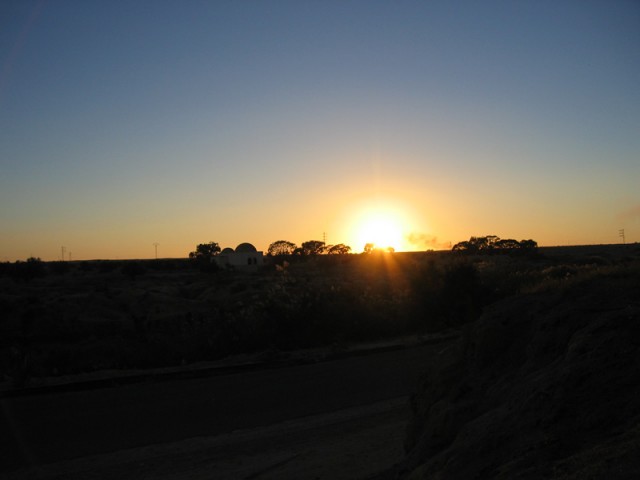
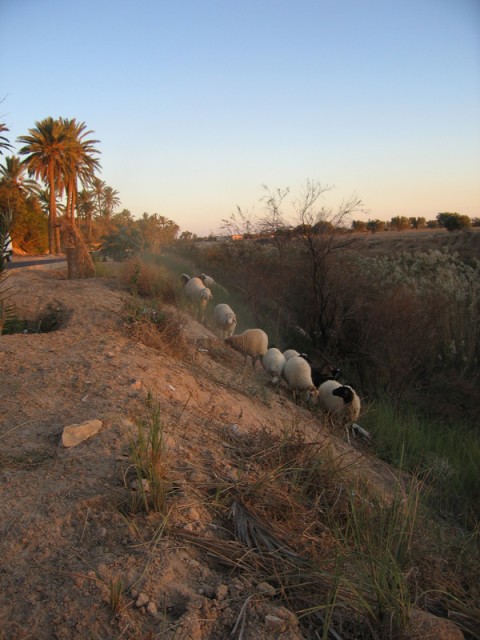
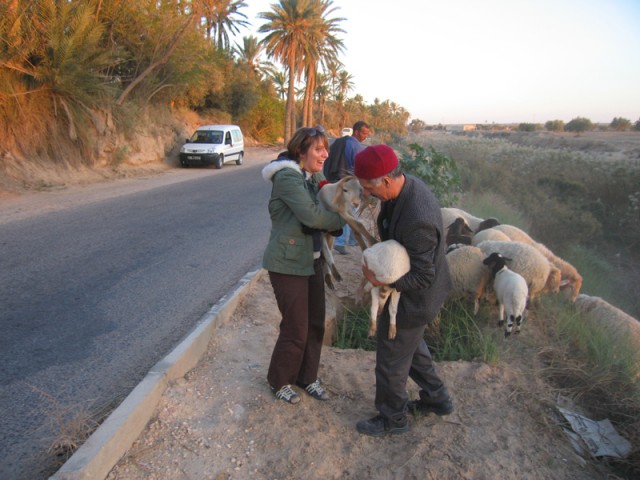
As we went back out to the bus, a herd of sheep came along. Karim went over and said hi to the Sheppard. It turns out that the kid herding the sheep is a nephew or cousin or somehow related to Karim. It seems that no matter where I’ve been in Tunisia, there’s a relative or friend of Karim’s there!
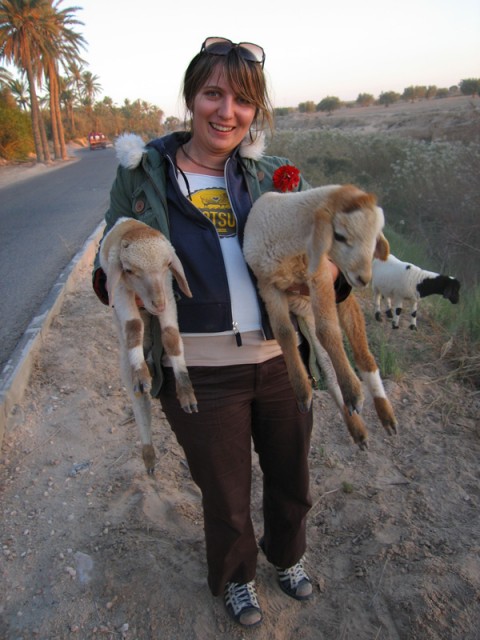
The sheep were very cute. Anne decided that she wanted a picture with them.

We took tea in the oasis that night next to the Roman aqueduct arch that the bus ladder hit a few days before.
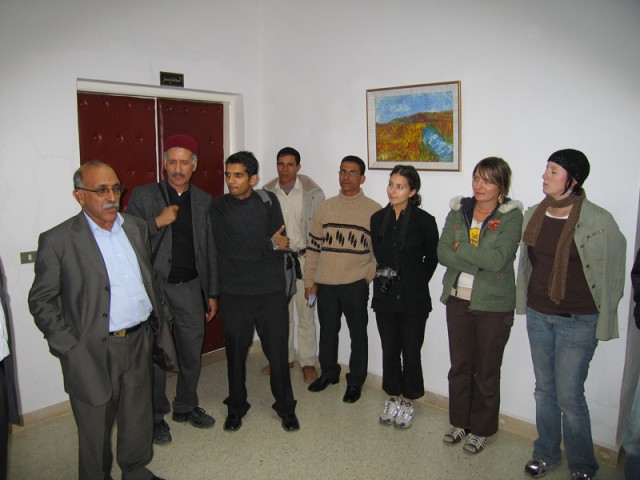
Next we visited the local university and dropped in on a few business classes.
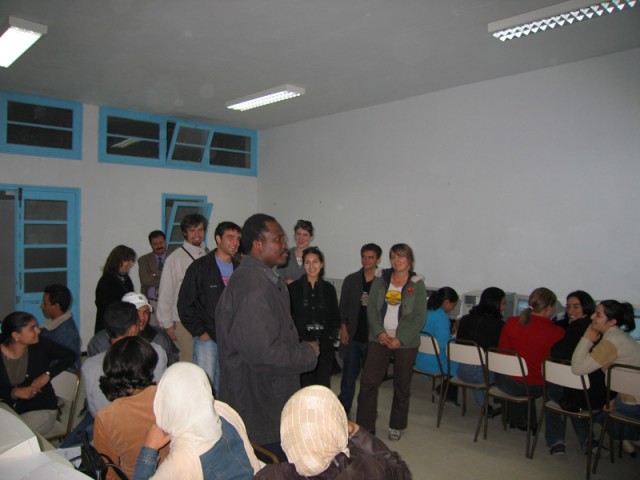
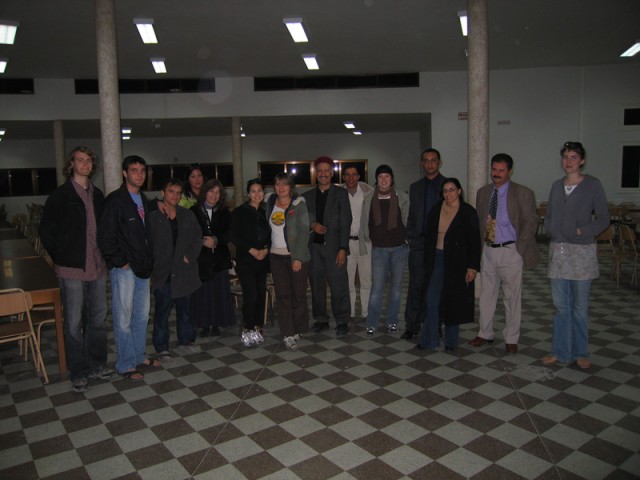
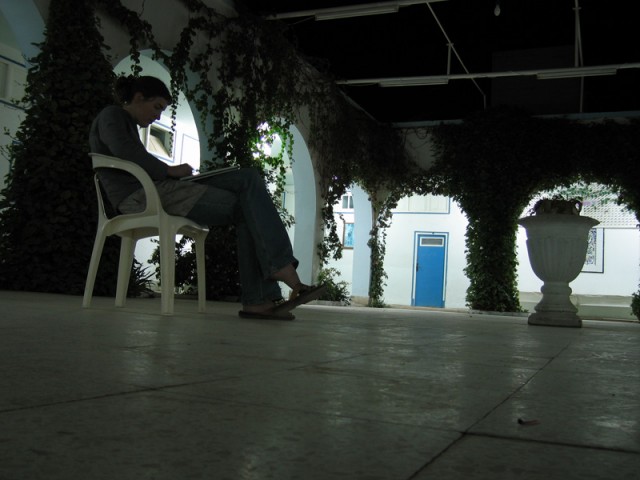
Finally, we pulled back into the hotel in Gabes. It had been a long day.
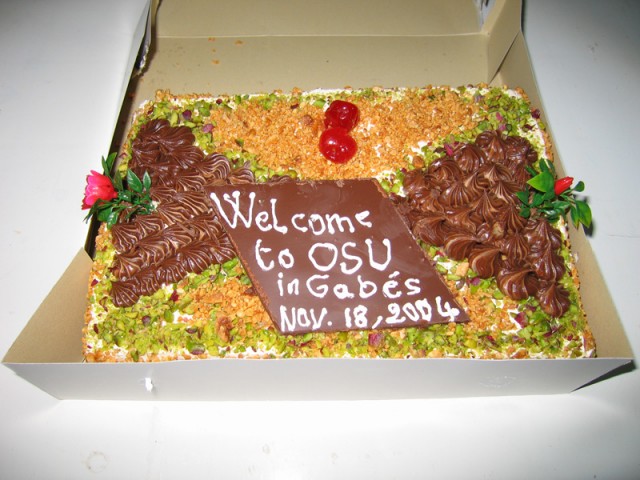
The hotel and our secret police friends gave us a cake welcoming us to Gabes. It was very tasty!
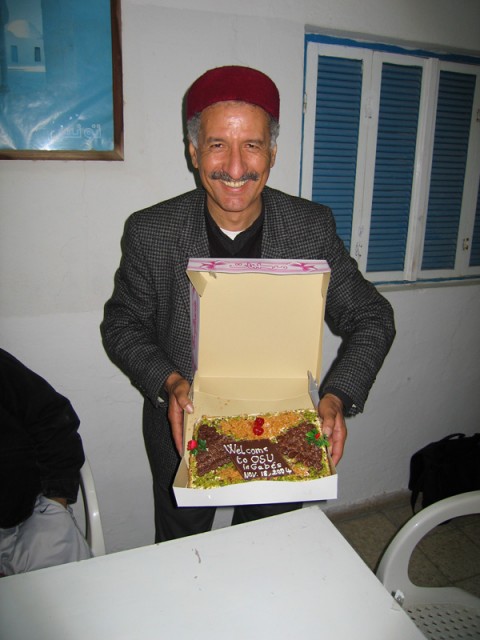
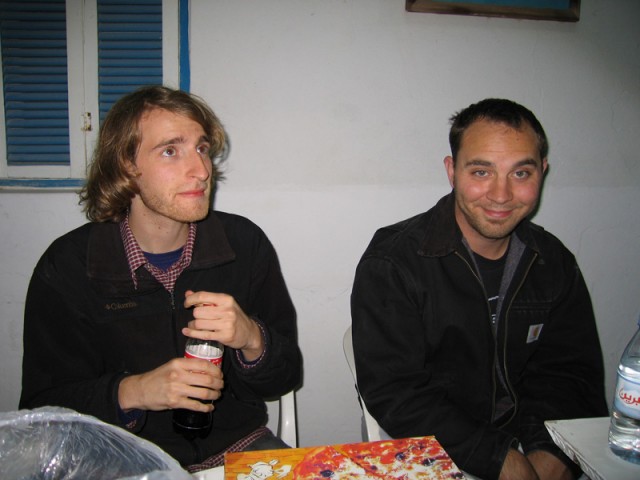
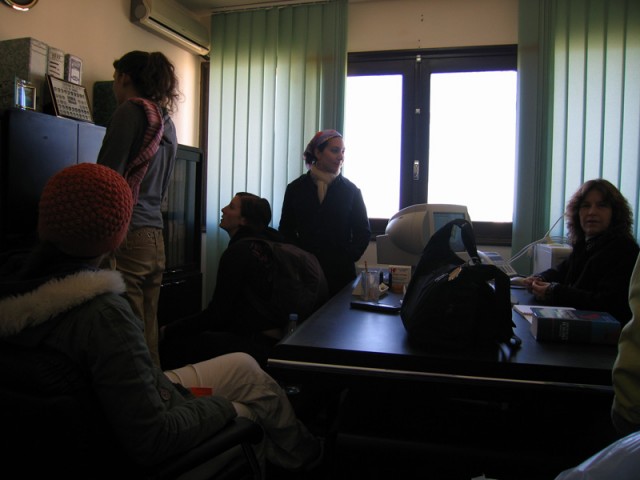
The next morning we went across the street from the hotel to visit Karim and his brother’s business offices. Karim’s office received a thorough examination from our group including the darling photo of him and his grade school class.
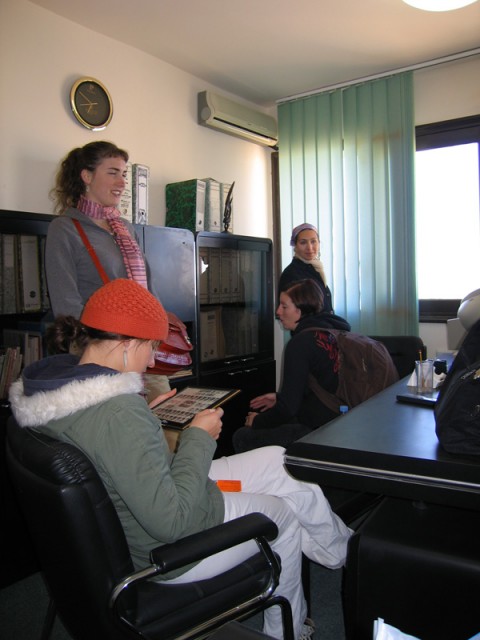
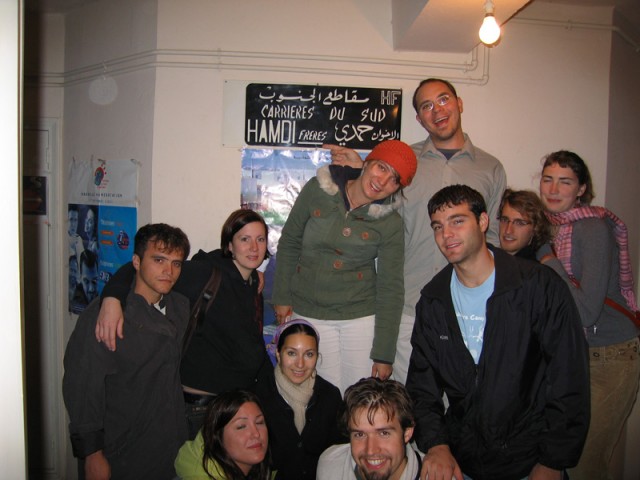
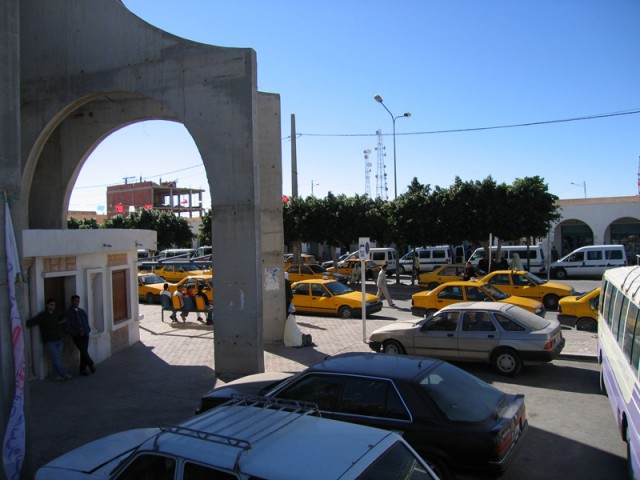
The taxi lineup at the taxi stand across the street from the main souk in Gabes. I read in the paper a few months after our visit that it caught fire and burned down sometime at the beginning of January 2005. I don’t know what would have burned other than the merchandise as the whole place was solid concrete and red brick blocks!
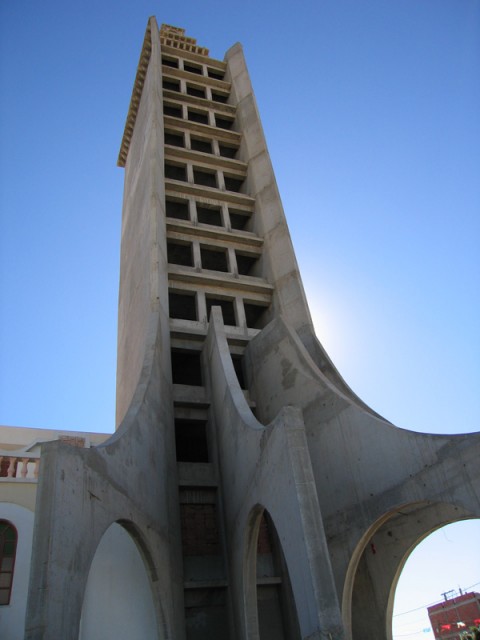
The unfinished minaret of the big mosque next to the souk which is reminiscent of a spaceport. No aliens were detected, aside from us, during our stay in Gabes.
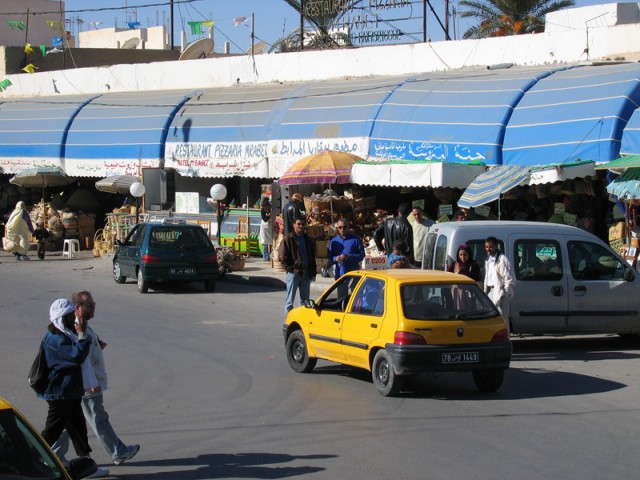
Mongi, our driver and one of his buddies or perhaps one of our secret police escorts.
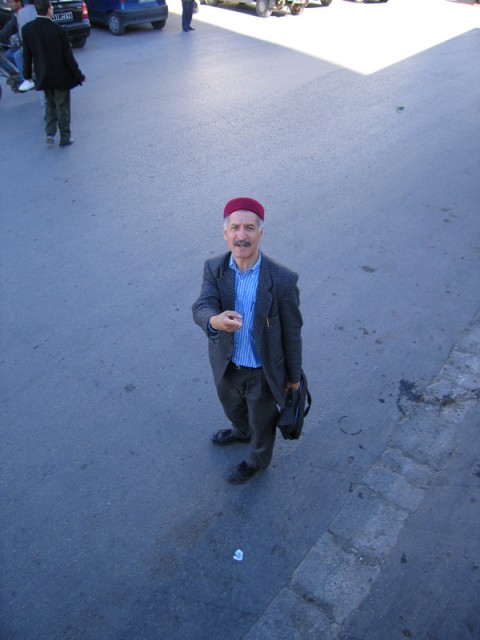
Someone finally realized that I was sitting on top of the bus taking pictures of the town and passersby.
